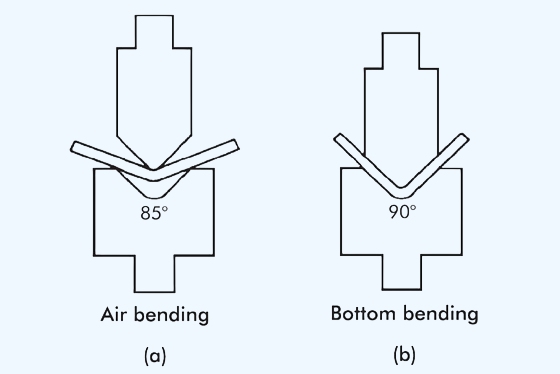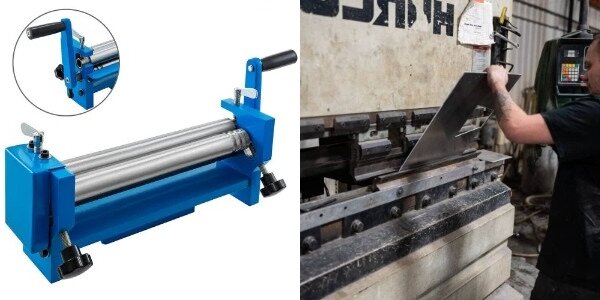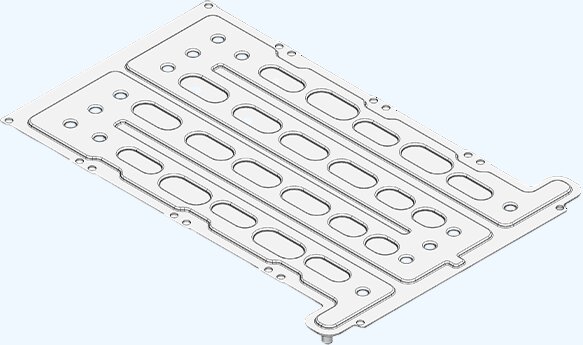عند مواجهة مهام التصنيع الآلي المعقدة، قد يكون العثور على الأداة المناسبة أمرًا صعبًا. غالبًا ما يعاني الميكانيكيون من مشاكل جودة تشطيب السطح ومشاكل الدقة وفعالية التكلفة عند العمل على الأسطح المسطحة الكبيرة. تعمل القواطع الطائرة على حل هذه المشاكل من خلال توفير تشطيبات سطحية فائقة ودقة أعلى وكفاءة أفضل من حيث التكلفة مقارنةً بالعديد من البدائل.
هل تريد معرفة القاطع الذبابي المناسب لمشروعك؟ يغطي هذا الدليل كل شيء من الأنواع الأساسية إلى التطبيقات المتقدمة.
ما هو قاطع الذباب؟
القاطع الذبابة هي أداة قطع دوارة يتم توصيلها بمغزل ماكينة تفريز وتدور لإزالة المواد. تمتد لقمة القطع من جسم الأداة وتقطع بنمط قوسي مع كل دورة، مما يخلق سطحًا أملسًا ومستويًا.
تقوم القواطع الطائرة بتركيب أداة القطع على مسافة محددة من مركز الدوران. أثناء دوران عمود الدوران، تزيل حافة القطع الإزاحة هذه المواد في مسار دائري. تحدث عملية القطع فقط عندما تلامس الحافة الشُّغْلة، مما يقطع عملية القطع.
تقوم الأداة بإنشاء أسطح مستوية لأن حافة القطع مضبوطة على ارتفاع ثابت. يزيل كل تمريرة طبقة رقيقة من المواد، وتخلق حركة تغذية ماكينة التفريز سطحًا مسطحًا. تسمى هذه العملية أحيانًا "القطع المتطاير" بسبب الحركة الكاسحة لحافة القطع.
مكونات القاطع الطائر
يتكون قاطع الذباب النموذجي من عدة أجزاء رئيسية تعمل معاً:
- الجسم/الشجرة: الهيكل الأساسي الذي يتم توصيله بمغزل ماكينة التفريز
- ذراع القطع: الامتداد الذي يحمل لقمة القطع على مسافة مناسبة من المركز
- إدخال القطع/إدخال القطع: حافة القطع الفعلية (غالبًا ما تكون مصنوعة من HSS أو الكربيد)
- مسامير التثبيت: يُستخدم لتأمين وضبط موضع لقمة القطع
- عرقوب: الجزء الذي يتناسب مع مغزل الماكينة أو الطوق
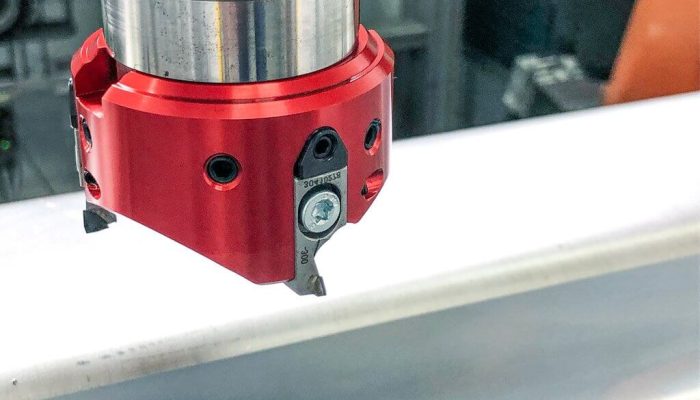
أنواع قواطع الذباب
تأتي قواطع الذباب بأنماط مختلفة، كل منها مصمم لمهام محددة. وفيما يلي تفصيل للأنواع الأكثر شيوعاً:
القاطع النقطي
القاطع المسنن له حافة قطع واحدة. وهي بسيطة وتعمل بشكل جيد للمهام الخفيفة. هذا النوع ممتاز للمشاريع الصغيرة حيث الدقة ضرورية. وهي سهلة الإعداد والاستخدام، مما يجعلها خياراً جيداً للمبتدئين.
أداة القطع الدوارة
يستخدم هذا النوع حركة دوارة لقطع المواد. وهو أسرع وأكثر كفاءة من القاطع النقطي. أدوات القطع الدوارة مثالية للمشاريع الكبيرة والمواد الأكثر صلابة. يمكنها التعامل مع المهام الشاقة بسهولة.
أداة النحت الدوارة
أدوات النحت الدوارة مصممة للأعمال التفصيلية. فهي مثالية لإنشاء تصاميم أو أنماط معقدة على الأسطح. وغالباً ما تستخدم هذه الأدوات في أعمال النجارة أو المشاريع الفنية. فهي توفر الدقة والتحكم في التشطيبات الدقيقة.
مواصفات القاطع الذبابة
يتطلب اختيار القاطع الذبابة الصحيح فهم العديد من المواصفات الرئيسية. تحدد هذه التفاصيل الأداة التي ستعمل بشكل أفضل لاحتياجاتك المحددة في التصنيع الآلي.
قطر القاطع ونطاق القطع
يشير قطر القاطع الذبابة إلى المسار الدائري الذي تنشئه حافة القطع أثناء دورانها. يؤثر هذا البعد بشكل مباشر على عرض القطع في مسار واحد.
يتراوح قطر معظم القواطع الذبابة من 1 إلى 8 بوصات، مع كون الموديلات من 2-3 بوصات هي الأكثر شيوعًا للتشغيل الآلي العام. تغطي الأقطار الأكبر مساحة أكبر في كل تمريرة ولكنها تتطلب ماكينات أكثر قوة وسرعات أبطأ.
يشير نطاق القطع إلى كمية المواد التي يمكن للأداة إزالتها بفعالية. بالنسبة لمعظم القواطع الطائرة
- تخفيضات خفيفة: من 0.005″ إلى 0.010″ عمق لكل تمريرة
- جروح متوسطة: من 0.010 ″ إلى 0.030″ عمق لكل تمريرة
- تخفيضات كبيرة: 0.030 ″ إلى 0.060″ عمق في كل تمريرة (فقط للماكينات القوية)
تتطلب القواطع ذات القطر الأكبر عادةً أعماق قطع أخف للحفاظ على الثبات وتجنب الضغط الزائد على الأداة.
حجم الساق والتوافق
الساق هو الجزء من القاطع الطائر الذي يتناسب مع عمود الدوران أو الطوق الخاص بماكينة التفريز. تتضمن أحجام السيقان الشائعة ما يلي:
- 3/8″ - للماكينات الهواة الصغيرة
- 1/2 بوصة - قياسي لمعظم ماكينات التفريز على سطح الطاولة
- 3/4″ - شائع للماكينات الكبيرة
- R8 وMT2 وMT3 - خيارات التركيب المباشر لعمود الدوران R8 وMT2 وMT3 - خيارات التركيب المباشر لعمود الدوران
تحقق دائمًا من مواصفات ماكينتك قبل شراء قاطع الذباب. يمكن للساق الصغيرة جدًا أن تسبب انزلاقًا أثناء القطع، في حين أن الساق الكبيرة جدًا لن تناسب ماكينتك.
تتميز بعض القواطع الطائرة بساق قابلة للتبديل، مما يتيح لك استخدام نفس رأس القطع على ماكينات مختلفة. يمكن أن تكون هذه المرونة ذات قيمة في الورش ذات ماكينات التفريز المتعددة.
إمكانيات تشطيب السطح والتفاوتات السطحية
تنتج القواطع الطائرة تشطيبات سطحية ممتازة، وغالبًا ما تتفوق على تلك التي يتم تحقيقها باستخدام القواطع متعددة الفلوت المطاحن الطرفية.
قدرات تشطيب السطح النموذجية:
- التخشين: 125-250 ميكرو بوصة رع 125-250 ميكرو بوصة رع
- الغرض العام: 63-125 ميكرو بوصة رع 63-125 ميكرو بوصة رع
- التشطيب: 32-63 ميكرو بوصة رع 32-63 ميكرو بوصة رع
- تشطيب دقيق: 16-32 ميكرو بوصة رع
يتم تحديد قدرات التحمل للقواطع الطائرة في المقام الأول من خلال دقة الماكينة وليس الأداة نفسها. ومع ذلك، يمكن أن يساعد القاطع الذبابي جيد الإعداد في تحقيق ما يلي:
- التصنيع الآلي القياسي: ±0.005″
- التصنيع الآلي الدقيق: ±0.001″
- دقة عالية: ±0.0005″
تشمل عوامل جودة الزعانف سرعة القطع، ومعدل التغذية، ووضوح اللقمة، وصلابة الماكينة.
توصيات السرعة ومعدل التغذية
تعتبر السرعة ومعدلات التغذية المناسبة ضرورية لنجاح القطع المتطاير. ولأن حركة القطع متقطعة، فإن هذه المعلمات تختلف عن تلك المستخدمة مع ماكينات التفريز الطرفية القياسية.
توصيات السرعة العامة:
- الألومنيوم: 500-1000 دورة في الدقيقة
- نحاسي/برونزي: 400-800 دورة في الدقيقة
- الفولاذ الطري: 300-600 دورة في الدقيقة
- الفولاذ المقاوم للصدأ: 200-400 دورة في الدقيقة
- الحديد الزهر: 250-500 دورة في الدقيقة
تتراوح معدلات التغذية عادةً من 1 إلى 5 بوصات في الدقيقة، اعتمادًا على المادة وعمق القطع والتشطيب المطلوب. ابدأ بسرعات وتغذية أبطأ، ثم اضبطها بناءً على النتائج.
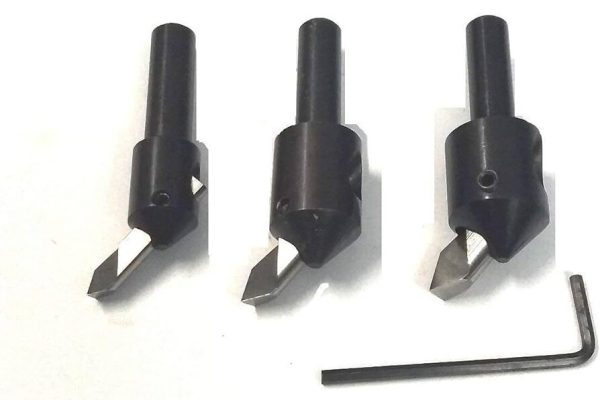
كيف تختلف القواطع الطائرة عن ماكينات تفريز الوجه وماكينات التفريز الطرفية?
تُستخدم جميع القواطع المتطايرة، وماكينات التفريز ذات الوجه، وماكينات التفريز الطرفية في التشغيل الآلي ولكنها تخدم أغراضًا مختلفة. إليك كيفية المقارنة بينها:
عدد الإدخالات
- قاطع الذباب: عادةً ما يكون لها حافة أو حافتي قطع. وهذا يجعلها أبسط وأكثر فعالية من حيث التكلفة.
- مطحنة الوجه: تستخدم إدخالات متعددة (غالبًا من 4 إلى 8). وهذا يسمح بإزالة المواد بشكل أسرع.
- مطحنة النهاية: عادةً ما تحتوي على 2 إلى 6 مزامير. وهي مصممة للعمل التفصيلي مثل الشق أو التحديد.
جودة التشطيب
- قاطع الذباب: ينتج أسطحاً ناعمة ومستوية مع لمسة نهائية دقيقة. مثالية لـ عمليات التشطيب.
- مطحنة الوجه: تخلق لمسات نهائية جيدة ولكنها قد لا تكون ناعمة مثل قاطعة الذباب. إنها أفضل لـ التخشين.
- مطحنة النهاية: يوفر تشطيبات دقيقة ولكنه مناسب أكثر للقطع التفصيلي بدلاً من الأسطح المسطحة الكبيرة.
متطلبات القطع
- قاطع الذباب: يعمل بشكل جيد للمهام الخفيفة إلى المتوسطة. الأفضل للأسطح المسطحة والتشطيب.
- مطحنة الوجه: يتعامل مع المهام الشاقة ويزيل المواد بسرعة. رائعة للأسطح الكبيرة.
- مطحنة النهاية: مصممة للقطع والفتحات والخطوط المعقدة. ليست مثالية للمساحات الكبيرة المسطحة.
يكلف
- قاطع الذباب: الخيار الأقل تكلفة بشكل عام. تصميم بسيط وأجزاء أقل تحافظ على انخفاض التكاليف.
- مطحنة الوجه: أكثر تكلفة بسبب الإدخالات المتعددة والبناء المعقد.
- مطحنة النهاية: تختلف التكاليف بناءً على الحجم وعدد المزامير. يمكن أن تكون التصاميم المتخصصة باهظة الثمن.
تطبيقات قواطع الذباب
القواطع الطائرة هي أدوات متعددة الاستخدامات تستخدم في مختلف مهام التصنيع الآلي. إليك كيفية استخدامها في سيناريوهات مختلفة:
عمليات الطحن العامة
القواطع الطائرة رائعة لمهام التفريز الأساسية. يمكنها تسطيح الأسطح وإزالة المواد وإنشاء تشطيبات ناعمة. بساطتها تجعلها سهلة الاستخدام في المشاريع اليومية.
تشطيب السطح عالي الدقة
تتفوق القواطع الطائرة في المشاريع التي تتطلب تشطيبات دقيقة. فهي تنتج أسطحًا مسطحة وناعمة مع الحد الأدنى من علامات الأدوات، مما يجعلها مثالية للأجزاء التي تحتاج إلى مصقول المظهر أو التفاوتات الضيقة.
التصنيع الآلي على نطاق واسع
يمكن للقواطع الطائرة التعامل مع قطع العمل الكبيرة. ويسمح لها نطاق القطع الواسع بتغطية مساحات كبيرة في عدد أقل من التمريرات، مما يوفر الوقت والجهد في العمليات الكبيرة.
قواطع الذباب في التصنيع باستخدام الحاسب الآلي
تُستخدم القواطع الطائرة في ماكينات التحكم الرقمي باستخدام الحاسب الآلي للمهام الدقيقة والآلية. تعمل بشكل جيد لإنشاء الأسطح المسطحة وعمليات التشطيب. إن قدرتها على التكيف تجعلها أداة قيمة في إعدادات الماكينات بنظام التحكم الرقمي.
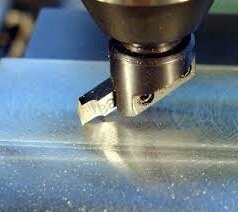
كيفية استخدام قاطع الذباب بفعالية?
يتطلب استخدام قاطع الذباب بشكل جيد الاهتمام بالإعداد والسرعة والصيانة. إليك كيفية الحصول على أفضل النتائج:
الإعداد والتركيب المناسب للأداة
ضمان التثبيت الآمن
قم دائمًا بإحكام ربط براغي التثبيت بإحكام لتثبيت أداة القطع في مكانها. قد تتسبب الأداة المرتخية في وقوع حوادث أو تشطيبات رديئة. تحقق مرة أخرى من حجم الساق للتأكد من أنها تناسب عمود دوران الماكينة بشكل صحيح.
تجنب مشاكل عدم التوازن
يمكن أن يتسبب القاطع الذبابة غير المتوازن في حدوث اهتزازات وقطع غير متساوٍ. تأكد من أن أداة القطع في المنتصف وأن الوزن موزع بالتساوي. إذا لزم الأمر، استخدم أداة موازنة لفحصها وضبطها.
ضبط السرعة ومعدل التغذية
أفضل الممارسات لمختلف مواد الشغل
تحتاج المواد الأكثر ليونة مثل الألومنيوم إلى سرعات أعلى وقطع أخف. تتطلب المواد الأكثر تعقيدًا مثل الفولاذ سرعات أبطأ ومعدلات تغذية أكثر تدرجًا. ارجع دائمًا إلى إرشادات الشركة المصنعة للمواد المحددة.
الضبط الدقيق للمعلمات لتحقيق الأداء الأمثل
ابدأ بالإعدادات الموصى بها، ثم اضبطها بناءً على النتائج. إذا كانت اللمسة النهائية خشنة، قلل معدل التغذية. إذا كانت الأداة ترتفع حرارتها، قم بخفض السرعة. يمكن للتغييرات الصغيرة أن تحدث فرقًا كبيرًا.
منع مشاكل التصنيع الشائعة
كيفية تقليل الاهتزاز والثرثرة
قد يؤدي الاهتزاز إلى إفساد اللمسات النهائية وإتلاف الأداة. تأكد من تثبيت قطعة العمل بإحكام. استخدم قاطع ذبابة بتصميم متوازن. في حالة استمرار الاهتزاز، افحص بحثاً عن الأجزاء البالية أو المفكوكة.
استكشاف الأعطال وإصلاحها وصيانة الأدوات
افحص حافة القطع بانتظام. الأدوات الباهتة تسبب تشطيبات رديئة وتزيد من تآكل الماكينة. قم بشحذ أداة القطع أو استبدالها حسب الحاجة. قم بتنظيف الأداة بعد كل استخدام لمنع التراكم.
خاتمة
القواطع المتطايرة هي أدوات متعددة الاستخدامات وفعالة من حيث التكلفة تُنشئ أسطحًا ملساء ومسطحة. وهي مثالية للطحن العام والتشطيب عالي الدقة والتشغيل الآلي على نطاق واسع. مع الإعداد المناسب، وتعديلات السرعة، والصيانة المناسبة، تقدم القواطع الطائرة نتائج متسقة وعالية الجودة.
إذا كنت تبحث عن قواطع ذباب عالية الجودة أو تحتاج إلى مشورة الخبراء بشأن اختيار الأداة المناسبة، فنحن هنا لمساعدتك. اتصل بنا اليوم لمناقشة متطلبات مشروعك واكتشاف كيف يمكننا دعم نجاحك في التصنيع الآلي.
مهلا، أنا كيفن لي

على مدى السنوات العشر الماضية، كنت منغمسًا في أشكال مختلفة من تصنيع الصفائح المعدنية، وشاركت رؤى رائعة هنا من تجاربي عبر ورش العمل المتنوعة.
ابقى على تواصل

كيفن لي
لدي أكثر من عشر سنوات من الخبرة المهنية في تصنيع الصفائح المعدنية، وتخصصت في القطع بالليزر، والثني، واللحام، وتقنيات معالجة الأسطح. كمدير فني في شنغن، أنا ملتزم بحل تحديات التصنيع المعقدة ودفع الابتكار والجودة في كل مشروع.

